Testosterone is the primary sex hormone in humans, and plays a crucial role in the development of male and female reproductive tissues, including the testes, prostate, and ovaries. It also promotes the development of secondary sexual characteristics such as increased muscle and bone mass and body hair in males. Testosterone is essential for overall health, well-being and prevention of osteoporosis in both sexes. Insufficient testosterone levels in men can lead to abnormalities such as fragility and bone loss. Testosterone possesses significant anabolic properties, including increased muscle mass, accelerated protein synthesis, increased recovery speed, and improved glycogen delivery to muscles. It regulates numerous bodily processes, which makes it a vital hormone that is used not only by elderly individuals with age-related hypogonadism, but also by athletes taking steroid cycles as a basis.
Mechanism of action
Testosterone binds to androgen receptors and serves as a precursor to dihydrotestosterone, a biologically active androgen that is formed through the conversion of testosterone by the enzyme 5╬▒-reductase. Dihydrotestosterone shows a fivefold greater affinity for androgen receptors. These hormones cause structural changes in receptors, which transmit signals to the cell nucleus, where androgenic effects occur through modulation of specific DNA genes. Testosterone can be aromatized into estrogen through the action of aromatase. Estrogens, rather than testosterone, predominantly activate feedback mechanisms through the hypothalamic-pituitary-testis axis and suppress endogenous testosterone secretion in the presence of exogenous testosterone-based drugs.
Medical use
Testosterone is included in the World Health Organization’s list of essential medicines, which includes vital medicines needed in a primary healthcare system. Therefore, the perception that it is only an anabolic steroid for muscle gain is incorrect; It is a crucial hormonal drug. Testosterone is used medicinally to treat gender dysphoria, male hypogonadism, and some types of breast cancer. Because testosterone levels decline with age in men, hormone replacement therapy (HRT) or testosterone replacement therapy (TRT) is necessary to maintain health and quality of life. HRT ensures that serum testosterone levels remain within normal limits. The decline in testosterone production associated with aging has sparked interest in androgen replacement therapy.
Mood, spatial ability, attention, memory and other cognitive functions in humans are influenced by testosterone. Preliminary evidence suggests that low testosterone levels are a risk factor for cognitive decline and potentially Alzheimer’s-type dementia.
In both sexes, testosterone contributes to general health, well-being and the prevention of osteoporosis. Insufficient testosterone levels in men can lead to abnormalities such as fragility and bone loss. Testosterone treatment is also beneficial for adult men with age-related low testosterone levels who suffer from sexual dysfunction.
Testosterone for seniors
Men over 35 who have health problems are often advised to test their blood testosterone levels. If levels are less than 12 nmol/l, hormone replacement therapy is recommended. This decision offers several positive aspects. Improves body composition, reducing fat and increasing muscle mass. It revitalizes sexual function and has a rejuvenating effect on the body, reversing the negative effects of androgen deficiency. Regular monitoring of lipid profiles, clinical blood parameters, estradiol levels, and prolactin levels is critical when using hormone replacement therapy. Natural gonadotropin production steadily declines with hormone replacement therapy, so if fertility is desired, special therapy involving gonadotropins is needed. Dosage selection for testosterone therapy should be made under the guidance of a healthcare professional and takes into account factors such as normal testosterone levels, current levels, body weight, body fat percentage, sex hormone binding globulin (SHBG) levels ) and flavoring process.
Indicatively, dosages for replacement therapy are much lower than those used by athletes, ranging from 50 to 200 mg per week.
Testosterone in sport
The main benefit of testosterone in sports is its ability to increase muscle mass and strength. In addition to its anabolic effects, it also exerts a strong androgenic effect. Androgens enter cells and interact with androgen receptor (AR) proteins. This interaction causes a conformational change in the AR protein, activating it. Although the change is minor, it has significant effects as it allows AR to enter the nucleus and bind to DNA, resulting in gene activation.
The rapid weight gain associated with testosterone use is primarily due to water retention through sodium retention and estrogenic effects. Testosterone can help relieve joint problems, pain and discomfort in the shoulders and knees, but other compounds such as nandrolone and growth hormone may be preferred for this purpose. Testosterone promotes the body’s regeneration processes, increases overall energy and desire to exercise, and prevents overtraining. It increases the oxygen-carrying capacity of the blood and stimulates the production of nitric oxide, leading to a satisfying pump during training sessions.
The recommended dosage for sporting purposes is typically 250-500 mg per week, with a tendency to increase the dosage as the athlete’s body weight increases. Testosterone cycles usually last 8-10 weeks, followed by 2-3 weeks post-cycle therapy. In some cases, testosterone is used for longer periods. High level professional athletes can use up to 2000 mg per week, although further increase in dosage is unnecessary and only increases the risk of side effects.
To mitigate the development of estrogenic side effects resulting from aromatization, it is advisable to regularly monitor estradiol levels and employ aromatase inhibitors if necessary. It is optimal to test estradiol levels before and during the use of aromatase inhibitors to evaluate their effectiveness and determine appropriate dosing. It is strongly recommended to entrust the dosage selection to professionals. However, the following information is provided for your reference.
How to use
In the field of strength sports, Testosterone Undecanoate is not widely used due to its indefinite and insufficient effect, as well as its extended duration of action. However, it finds greater application in clinical andrology as hormone replacement therapy for patients with age-related androgen deficiency. To keep serum testosterone levels stable within the normal range without significant fluctuations, injections are administered every 3 months after an initial loading dose at an interval of 6 weeks (although in practice more frequent administrations, every 4-5 weeks, are common ).
Pharmacokinetic studies have shown that testosterone levels return to the physiological range within 3 days of initial administration. When injections are spaced approximately 10 to 12 weeks apart, testosterone concentrations consistently remain within the normal range. The initial dosing interval may be shortened to six weeks to achieve steady-state testosterone levels more quickly.
When administering Testosterone Undecanoate, the following recommendations should be taken into account:
- Administer the first and second doses of Testosterone Undecanoate at 4-6 week intervals.
- Thereafter, maintain an interval between injections of approximately 10-12 weeks.
Effects
- Increased muscle mass
- Involvement in the development of male genitalia and secondary sexual characteristics, such as a deep voice, masculine facial features, and male-pattern hair growth
- Promotion of spermatogenesis and male behavior, including sexual drive, aggression and decisiveness
- Increased muscle mass
- Burning fat
- Greater strength
- Increased libido
- Reduction of blood cholesterol levels
- Reduced risk of cardiac ischemia and coronary heart disease
- Stimulation of erythropoiesis and redistribution of subcutaneous adipose tissue towards a male model
- Influence on nitrogen and phosphorus metabolism
Side effects
- High blood pressure
- Increased sexual behavior
- Hemoconcentration (increased blood clotting)
- Potential formation of blood clots in arterial and venous vessels
- Water retention (edema)
- Masculinization
- Aggression, agitation and irritability
- Alopecia (baldness on the scalp)
- Acne (pimples and skin blemishes)
- Insomnia (rare event)
Profile
- Half-life: 28-34 days
- Injection frequency: every 7-14 days
Pharmaceutical form
Oily solution for intramuscular injection.
Contraindications
- Pregnancy
- Known or suspected carcinoma of the prostate or breast
- Breastfeeding
- Hypersensitivity to the active substance or to any of the excipients
Storage instructions
- Do not use after the expiry date
- Store between 8┬║C and 30┬║C
- Do not freeze
- Protect from light

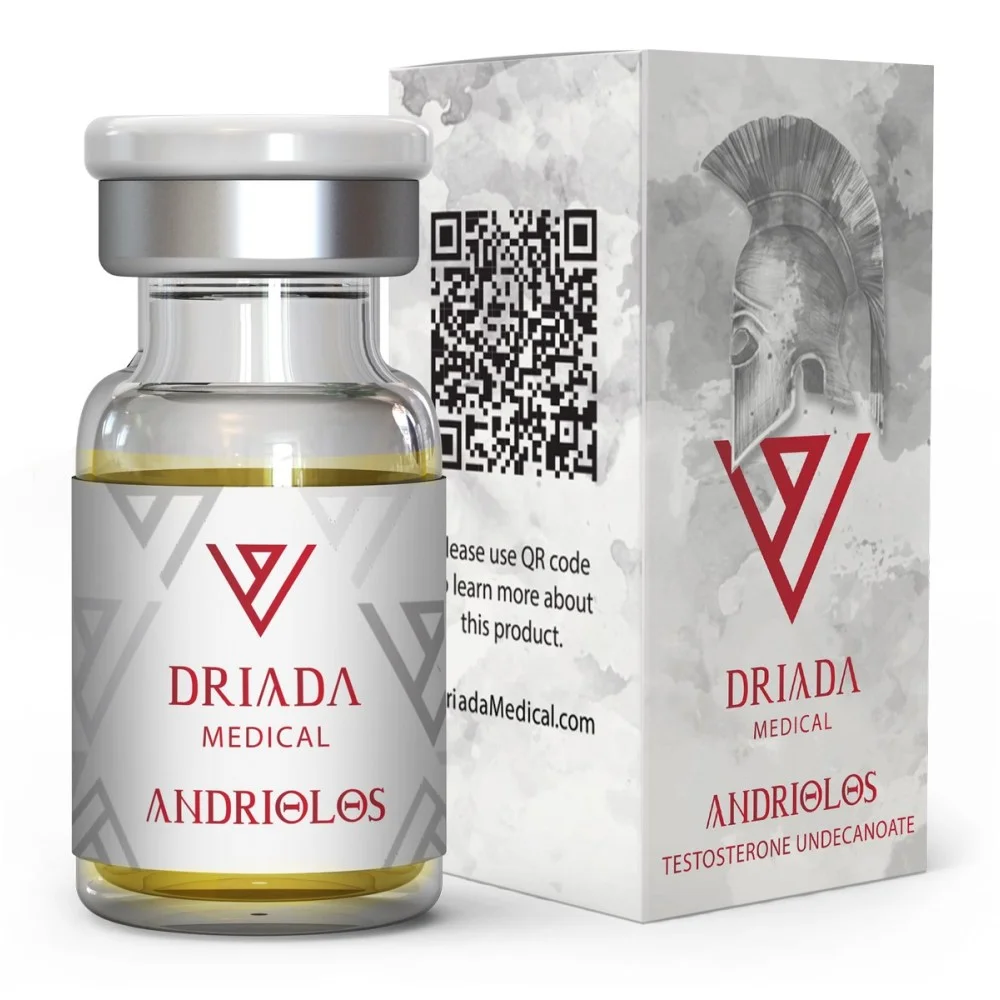
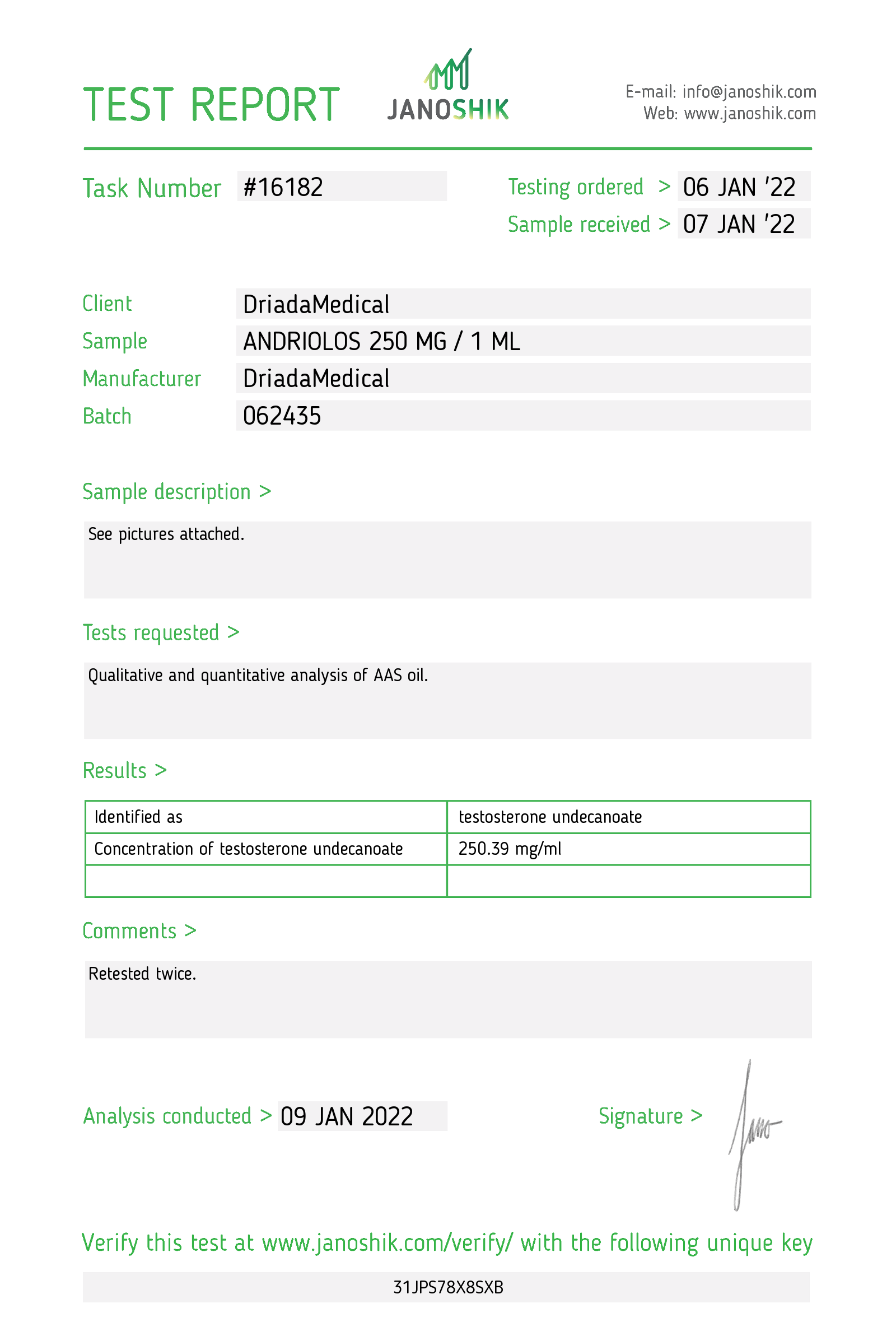
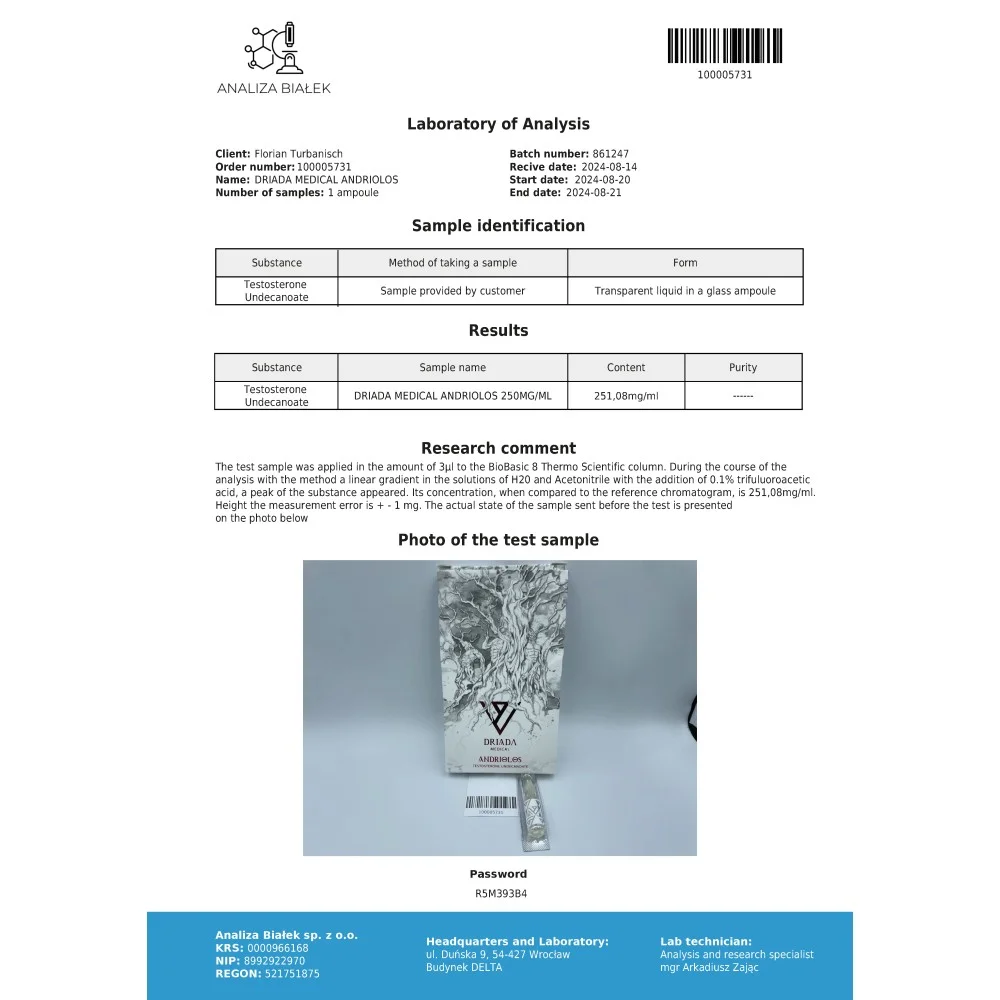
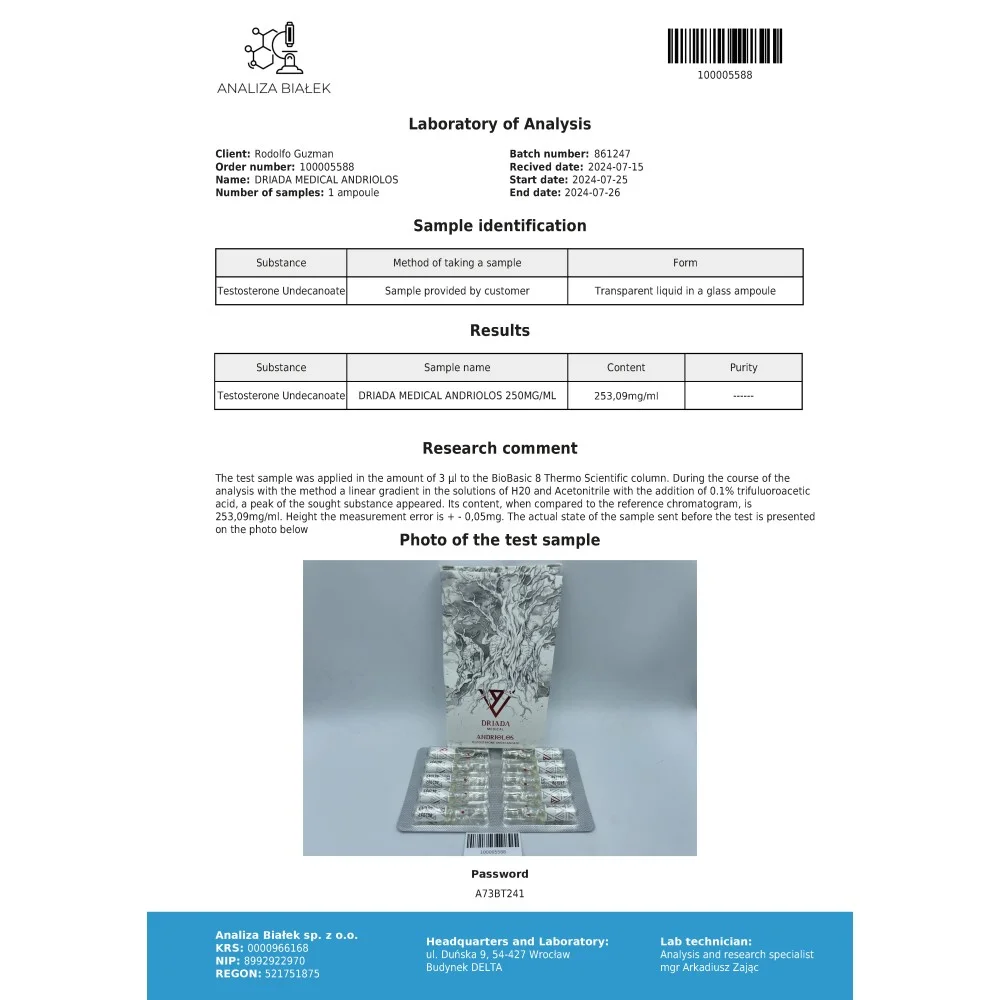

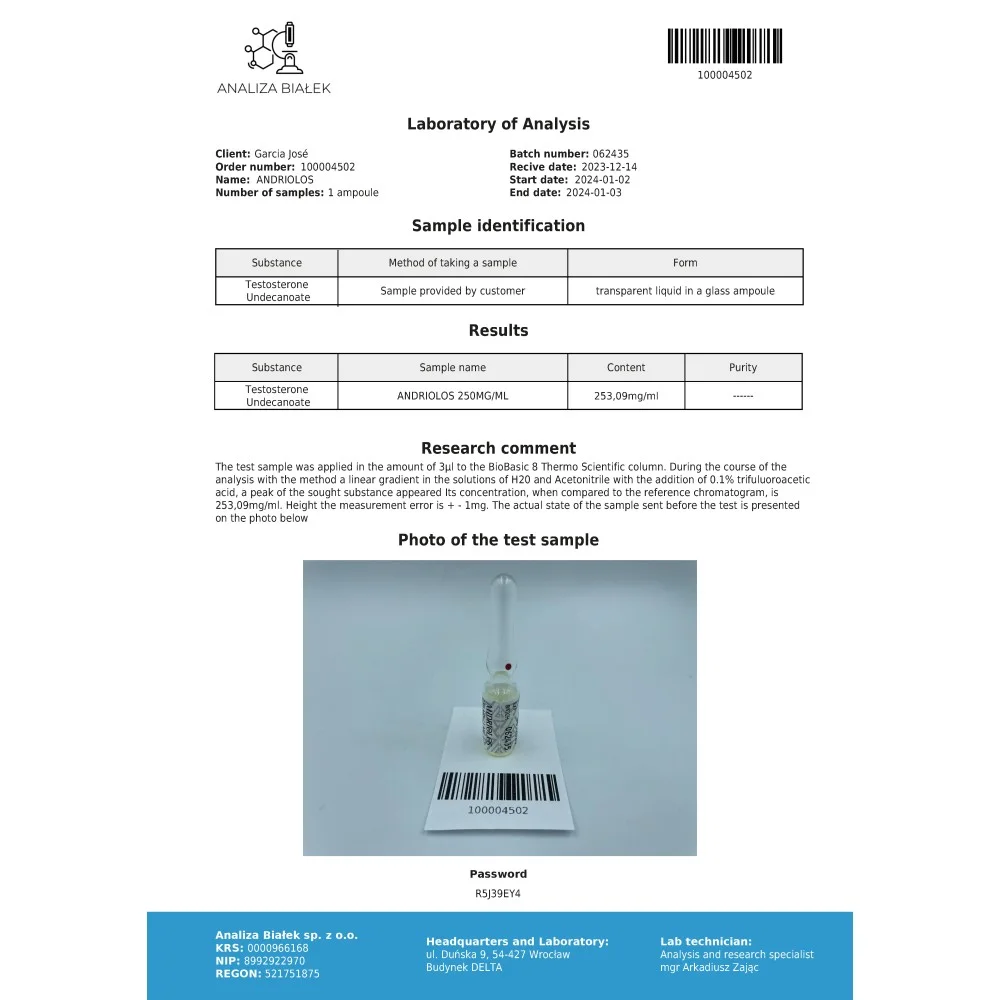


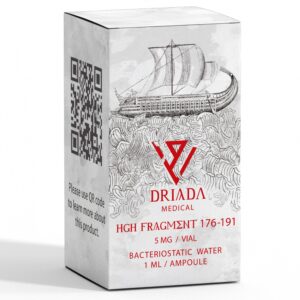
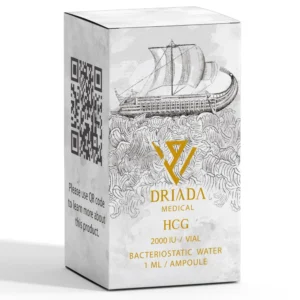


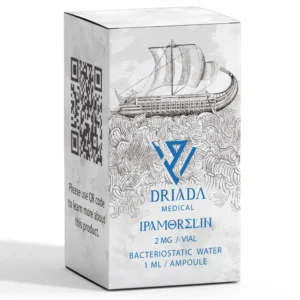
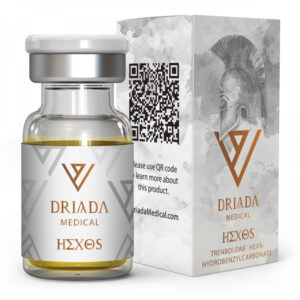
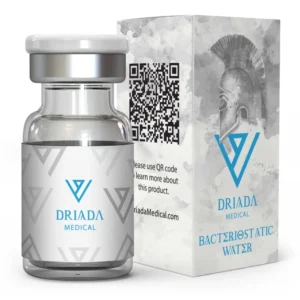

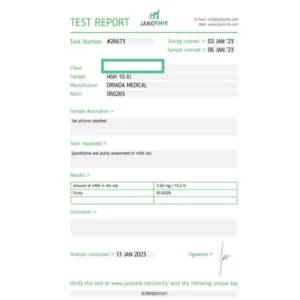


Reviews
There are no reviews yet.